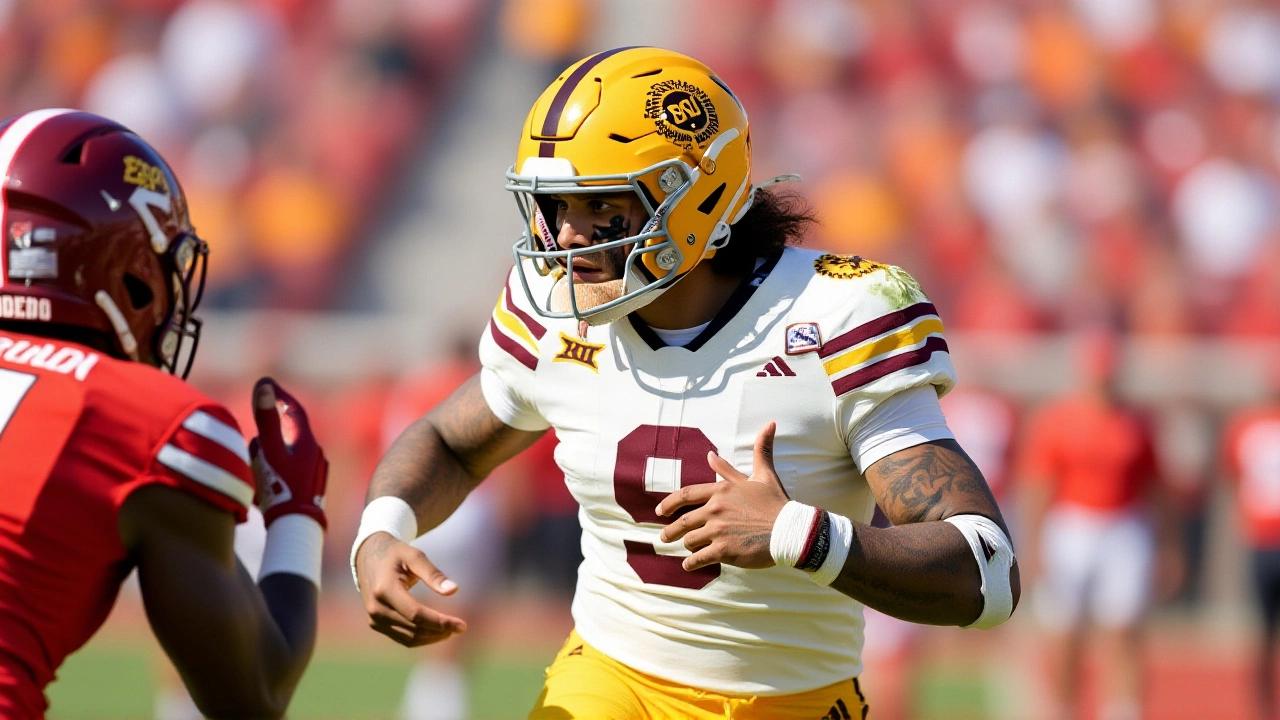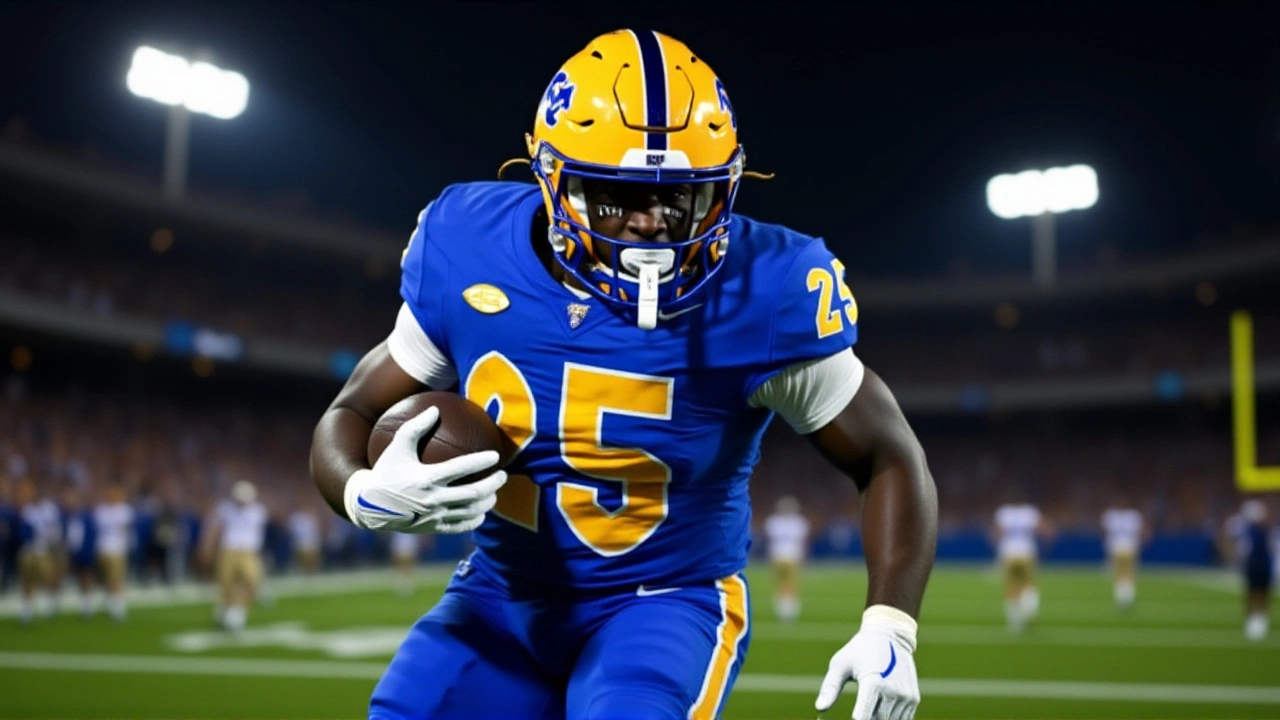When Raleek Brown broke free for an 88-yard touchdown with 13:31 left in the fourth quarter, the crowd at Folsom Field fell silent—not from celebration, but disbelief. The Arizona State Sun Devils had just turned a precarious 21-17 lead into a commanding 28-17 advantage, all thanks to a running back who refused to let a fumble define his night. Brown’s 255 rushing yards on just 22 carries, plus 33 more through the air, didn’t just break a 52-year-old road record—he kept Arizona State’s slim chance at the Big 12 Championship GameDallas alive. The 42-17 win over the Colorado Buffaloes on November 22, 2025, wasn’t just another road victory. It was a statement. And it came on the back of a performance that ranks among the greatest in school history.
A Record-Breaking Night in Boulder
Brown’s 255 rushing yards shattered the previous Arizona State road rushing record of 251 set by Ben Malone in 1973 at Oregon State. He averaged 11.6 yards per carry, turned two critical fourth-down plays into touchdowns, and finished with 288 all-purpose yards. His 33-yard reception on fourth-and-goal in the first half gave ASU its first lead, 10-7. Then came the fumble—late in the third quarter, Brown lost the ball near the goal line after a hard hit. For a moment, it looked like the game might slip away. But Ronald Coleman, Colorado’s running back, fumbled the recovery right back to the Sun Devils. On the very next snap, Brown took a handoff, found a seam up the middle, and outran the entire defense. The 88-yard touchdown wasn’t just a score. It was redemption."I told everybody I was gonna get (it)," Brown said post-game. "It happened on the first play."
Why This Win Matters More Than the Score
Arizona State (8-3, 6-2 Big 12) hadn’t won eight games in back-to-back seasons since 2013-14. They hadn’t posted winning road records in consecutive years since then either—making this 3-2 road mark in 2025 (following 4-2 in 2024) just the fourth time since joining a Power Five conference in 1978. Head coach Kenny Dillingham called it "huge," not just for the win, but for the momentum. "There’s not many teams still in college football playing meaningful football," he said. And he’s right. With Texas Tech and BYU both sitting at 11-1 in conference play, the Sun Devils need help. But they’ve done everything they can. Now, it’s up to the rest of the league.The offense totaled 580 yards—led by quarterback Jeff Sims, who completed 18 of 25 passes for 232 yards and two touchdowns, including the one to Brown on fourth down. The defense held Colorado’s offense, led by five-star QB Julian Lewis, to just 300 yards and forced three turnovers. The Buffaloes, still reeling from the departure of Shedeur Sanders and Travis Hunter, looked disjointed. Only offensive lineman Jordan Seaton stood out as a consistent presence. Their 17 points? All came before halftime. After that, the game was over.

The Mental Shift That Changed Everything
Brown didn’t just dominate physically—he changed the game mentally. "It was just a mindset," he said. "Coach Roy just had good play calling, and I just trusted my process." That phrase—"trust the process"—echoes through the locker room. After four turnovers, many would have crumbled. Instead, the Sun Devils tightened up. They didn’t panic. They didn’t try to force anything. They waited. And when Colorado made the mistake, they struck like lightning.It’s a sign of growth. In 2023, ASU lost close games because they couldn’t close. This year, they’ve won five games by 10+ points in the final quarter. That’s not luck. That’s culture.
What’s Next for Arizona State—and Colorado?
The Sun Devils now turn their attention to the Arizona Wildcats in the Territorial Cup on December 6. It’s the final game of the regular season, and it’s always emotional. But this year, it carries extra weight. Win, and they’ll likely earn a New Year’s Six bowl bid. Lose, and they’re headed to a lower-tier postseason game—despite an 8-4 record. Either way, Brown’s season is already historic. He’s the 11th player in the last 15 years to hit 1,000 rushing yards for ASU, and his 1,047 total yards this season rank him fifth in the Big 12.For Colorado? The future is murky. Coach Deion Sanders’ "next man up" philosophy has been tested. The talent pipeline is thin. The offense lacks identity. And the defense? It gave up 42 points to a team that turned the ball over four times. The Buffaloes are stuck in transition. And without Sanders’ star players, they’re not just rebuilding—they’re rethinking.

Behind the Numbers
- Raleek Brown’s 255 rushing yards: third-most in ASU history, most ever on the road
- Arizona State’s 580 total yards: highest output against Colorado since 2019
- 42 points: ASU’s most in a road game since 2017
- 33:08 time of possession: highest for ASU this season
- 2-for-2 on fourth-down conversions in the first half: both resulted in touchdowns
Frequently Asked Questions
How does Raleek Brown’s performance rank in Arizona State history?
Brown’s 255 rushing yards are the third-highest single-game total in ASU history and the most ever on the road. Only two players in program history have rushed for more: Herm Edwards (277 in 1975) and Ed Marinaro (264 in 1971). His 288 all-purpose yards are the highest by a Sun Devil since 2019. He’s now the 11th player in 15 seasons to hit 1,000 rushing yards for ASU.
What does Arizona State need to make the Big 12 Championship Game?
ASU needs both Texas Tech and BYU to lose in their final games. Texas Tech plays TCU, and BYU faces Utah. If both lose, ASU would finish tied for second in the conference with a 6-2 record and likely earn the No. 3 seed based on tiebreakers. Even then, they’d need the Big 12 to allow a third-place team into the title game, which hasn’t happened since 2020.
Why is Colorado struggling despite Deion Sanders’ reputation?
Sanders built Colorado’s 2023 team around Shedeur Sanders and Travis Hunter—two elite NFL prospects who left after one season. The depth behind them hasn’t developed fast enough. The offensive line is young, the quarterback play is inconsistent, and recruiting has yet to catch up. The program is in a transition phase, and the results show it: 3-9 this season, with no wins over Power Five opponents.
Is this the best season for Arizona State since 2013?
It’s the most complete. In 2013, ASU went 11-2 and won the Pac-12 South, but lost in the conference title game. This year’s team has shown resilience, offensive balance, and defensive toughness. With a 3-2 road record in 2025 and 4-2 in 2024, they’ve proven they can win anywhere. If they beat Arizona next week, this could be their most successful season since 2013.
How did Arizona State convert both fourth downs in the first half?
The first was a 12-yard scramble by Jeff Sims on fourth-and-8 at the Colorado 35. The second was the 33-yard TD pass to Brown on fourth-and-goal from the 2-yard line—a perfectly timed slant that caught the defense off-guard. Both plays were called by offensive coordinator Danny Langsdorf, who shifted to a more aggressive, play-action-heavy scheme after the bye week. The results? Six touchdowns on drives that started with fourth-down conversions.
What’s the significance of Brown’s 88-yard touchdown?
It was the longest scoring play of the season for Arizona State, matching Jeff Sims’ 88-yard run against Iowa State. More importantly, it came immediately after Brown’s own fumble—turning a potential disaster into a momentum-shifting highlight. In college football, few plays define a player’s legacy faster than a redemption touchdown like that. It’s the kind of moment that gets replayed on SportsCenter for weeks.
